Best Color 3D Printers
As of this writing, full-color 3D printing is still in the early stages. Well, at least on the consumer or desktop level, considering industrial full-color 3D printers, the ones that cost well over $10,000, have been around for some time. This is one of the barriers preventing desktop 3D printers from expanding to more applications and being more widely adopted, especially for business.
The good news is that, while full-color 3D printing on the consumer level is still far from being as developed as single-color 3D printing, there are existing workarounds to produce multi-color models, one of which is obviously using a dual extruder 3D printer. For those tired of single-color prints, check out the following solutions.
Multi-Color Printing via the Manual Method
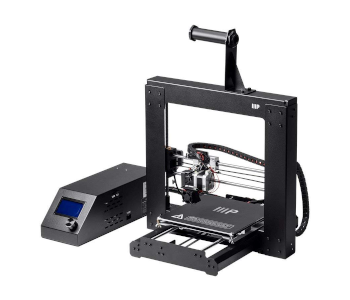
While it requires a more involved process and can be unreliable sometimes, producing multi-color prints with just a single extruder is possible. You can do this by pausing mid-print and initiating a filament change – a process normally used for when the loaded filament is about to run out. Once the print is paused, simply switch to a different filament and then resume the print.
This process can be done either manually or with the help of a slicer like Cura. The former method is not the most recommended. It’s a lot more laborious since it requires you to watch the print progress like a hawk and manually pause the print at a certain point. With the help of a slicer, a filament change command can be inserted in the code, which causes the print progress to automatically pause at a specific point, allowing you to swap a different filament.
Although some require more tinkering than normal to get it right, many desktop 3D printers on the market support this kind of multi-color printing, from budget models to high-end ones. One of the best for the job is the Original Prusa i3 MK2S, which sells for about $600 in its kit form. It’s an absolute workhorse that can produce great prints even with the stock components. The newer MK3 is also a fantastic option, though that one will cost you around $750 for the kit.
For a more economical option, the Monoprice Maker Select v2 – which goes for less than $300 and is notable for being one of the best cheap 3D printers on the market – is a solid choice. Keep in mind that not all 3D printers behave in the same way. Before green-lighting an actual print job, do several tests first and see how your 3D printer reacts to the inserted filament change command.
Multi-Color Printing with the Mosaic Palette 2
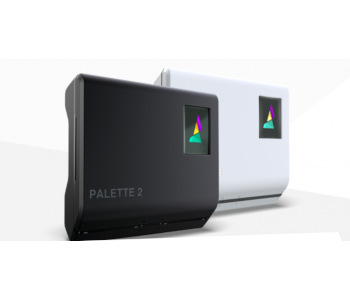
The above process isn’t the only way to produce multi-color prints with a single extruder 3D printer. With the Mosaic Manufacturing Palette 2, you can print up to four colors using one nozzle and with no need to pause mid-print to swap out a different filament. Sounds too good to be true, right? Well, the good news is that it’s legit. The bad news is that this particular method will cost you at least $600.
The successor to the Palette+, the recently launched Palette 2, which ships out this November, is an accessory that takes up to four filaments and splices them into a single strand, allowing for hassle-free multi-color printing. It’s got its own built-in touchscreen interface and can connect via SD card or USB. Unlike the multi-material upgrade for the Original Prusa i3 series (more on this later), the Palette 2 is an external accessory that doesn’t necessarily have to be mounted on the 3D printer itself.
Compatible with PLA, PETG, flexible filaments, and dissolvable support materials, the Palette 2 is an interesting equipment that turns a regular single extruder 3D printer into a multi-material machine. And like its predecessor, it can work with a wide selection of products, including the MakerGear M2, the Wanhao Duplicator i3, the Creality CR-10, the Robo R2, and the LulzBot TAZ 6, among others. Some products don’t come with full compatibility, though, especially with regard to the Canvas Hub add-on.
Mosaic Manufacturing is also offering a souped-up model in the form of the Palette 2 Pro, which sells for about $800, placing it in the same price range as the Original Prusa i3 MK3 kit. According to the manufacturer, the premium model has better construction, featuring a better cooling system and 20 percent faster splicing speeds. In regard to compatibility, the Palette 2 Pro is similarly rated for 1.75-millimeter filaments and can work with some of the most popular 3D printers on the market.
While the Palette 2 is a neat add-on that makes multi-material printing more accessible, it has one notable limit that might discourage some people: it can’t mix colors. It merely splices the filaments, producing a single filament strand with alternating colors. This means the available colors depend on the base color of the loaded filaments. The main thing about the Palette 2 is the convenience, as it eliminates the need to manually swap out filaments mid-print.
Multi-Color Printing with the Prusa MMU 2.0 Kit
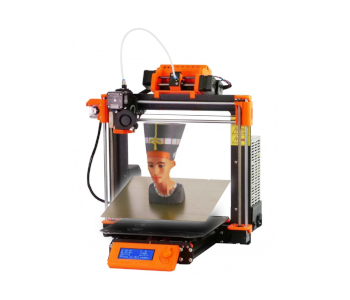
Prusa Research’s (MMU) kit is another accessory that makes it possible to produce multi-color prints with a single nozzle setup. The current model is the MMU 2.0, which started shipping just last August and sells for just around $300, making it significantly cheaper than Mosaic Manufacturing’s multi-material tool.
Unlike the Palette 2, the new MMU 2.0 can only work with the Original Prusa i3 MK2.5 and MK3 out of the box, with no major tinkering required. But on the plus side, it can print with up to five different filaments, resulting in more colorful prints. It’s better than the original MMU in a lot of ways, featuring new electronics and a completely redesigned structure. It keeps the direct drive system of Prusa Research’s 3D printers and has a single PTFE tube, which makes it look less complex.
Equipped with smart features such as a filament sensor, power loss recovery, and a smart wiping system for reduced filament waste, the MMU 2.0 is a fantastic accessory for those who own the MK2.5 or MK3. It mounts easily onto the frame and is more open-source, which isn’t surprising considering Josef Prusa’s commitment to the open-source movement. As of this writing, the MMU 2.0 can print with ABS, PLA, PETG, and dissolvable materials, with upcoming support for flexibles.
Like the Palette 2, the MMU 2.0 is not capable of mixing colors, so don’t expect full-color printing. In spite of this limit, it can still produce colorful prints, featuring the print quality the Original Prusa i3 series is known for. For MK2.5 and MK3 owners, the MMU 2.0 is the no-brainer pick for a multi-material add-on. For everyone else, Mosaic Manufacturing’s multi-color tool is more ideal.
Multi-Color Printing with Dual Extruders
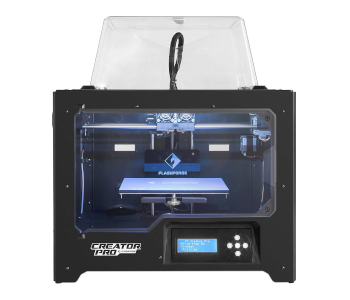
While some 3D printers allow for a seamless process, changing filaments mid-print to produce multi-color models can be inconvenient. The chief reason is that even with an auto-pause command in place, the process still relies on you to make the actual filament change. What if the filament change command kicks in while you’re asleep or out of the house? And that’s assuming you’re comfortable with leaving a 3D printer running without supervision.
A dual extruder 3D printer addresses that speed bump. Since it’s already loaded with a pair of filaments, there’s no need to pause mid-print to insert a differently colored filament. It can print in dual colors from start to finish without any form of manual intervention – unless the filament runs out, of course. This is one of the two main advantages of dual extruder 3D printers, with the other being the ability to print dissolvable support materials for more complex models.
There are two kinds of dual extruder 3D printers: one with dual nozzles mounted on a single carriage and one with dual nozzles each mounted on an independent carriage. The Ultimaker 3 is an example of the former while the BCN3D Sigma is an example of the latter. With independent dual extruders, you can print two copies of the same model at the same time, boosting your productivity. But there’s a reason the market isn’t full of such 3D printers: they are more complicated to use.
For multi-color 3D printing, a regular dual extruder 3D printer, one that features a single mount for the dual nozzles, is good enough. But don’t expect it to be as fast as a single extruder 3D printer, considering the additional weight on the print head affects the print speed.
Considering there are fewer options, shopping for a dual extruder 3D printer is easier compared to when shopping for a single extruder 3D printer, especially when you set the price limit to $1,000. As mentioned in our guide to the best dual extruder 3D printers, the Ultimaker 3 is the best on the market. It’s a professional-grade machine that, once tuned-up, can produce print after print with little to no issues. The bad news is that it sells for well over $3,000, not exactly the most accessible price point for most folks.
For those on a tight budget, the popular FlashForge Creator Pro is more suitable. It’s one of the most reliable 3D printers on the market. It has a large community and comes mostly assembled. The Qidi Tech I, a Creator Pro clone, is also a solid option for those who can’t spend more than $700 on a dual extruder 3D printer. If independent dual extruders interest you, check out the MakerGear M3-ID and the aforementioned BCN3D Sigma and its big brother, the Sigmax – all of which are on the expensive side.
Multi-Color Printing with the XYZprinting da Vinci Color
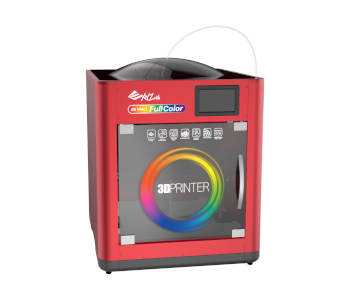
The XYZprinting da Vinci Color is an interesting machine that combines Fused Filament Fabrication with inkjet technology to produce full-color prints. It sells for over $3,000. Combine that with the running costs, and the da Vinci Color is one expensive machine overall, though not on the same level as the industrial ones.
Using CMYK ink cartridges found in regular 2D printers, the da Vinci Color’s process is easy to wrap your head around. It uses a special color-absorbing filament as the base material. The inkjet technology drops pigment on the model as it prints. That’s it. No complicated tricks or anything. It simply combines a couple of existing technologies to make full-color 3D printing possible.
There are downsides to this method, though. Obviously, combining two different processes opens the door to more potential problems. While the da Vinci Color can produce full-color prints, the results are not as vibrant as you might expect, at least compared to hand-painted models or those produced by multi-material printing. Since the color is underneath the filament, the colors don’t stand out that much.
Ignoring its ability to produce full-color prints, the da Vinci Color, as a normal 3D printer, is probably decent at best – an assessment that also extends to the manufacturer’s other 3D printers. It’s an enclosed machine in the same mold as the da Vinci 1.0 Pro. It has a good build volume and features a 5-inch touchscreen interface, the latter of which easily separates it from the other models in the da Vinci series. It can connect via Wi-Fi and includes an auto-calibration system that speeds up the initial setup, a magnetic print bed, and a side-mounted spool holder.
While it sounds more interesting than the other methods mentioned here, the da Vinci Color’s process is still not a full-fledged solution to full-color 3D printing on the consumer level. Some say it’s just a gimmick while others cringe the minute they read it’s from XYZprinting, a company known for its use of proprietary materials, which is a big turn off in the 3D printing community. Until a significant amount of customer feedback and reviews pop up, we won’t know just how viable the da Vinci Color is when it comes to full-color printing.
Multi-Color Printing with the M3D Crane Quad

The recently launched M3D Crane Quad is another interesting option. It uses a multi-material system similar to Mosaic Manufacturing’s Palette 2 and Prusa Research’s MMU 2.0, featuring a large print head capable of mixing colors directly. According to M3D, the brand behind the Micro, the Crane Quad can create over 50,000 colors with the company’s own CMYK filaments.
A lot of people are not convinced by this solution, though, considering M3D’s reputation and the fact that the Crane Quad appears to be just another Prusa-based 3D printer with a gimmick. We’ll see how things go once we get a good look at the Crane Quad’s performance. It’s up for just around $500, another reason lots of people are skeptical about it.





